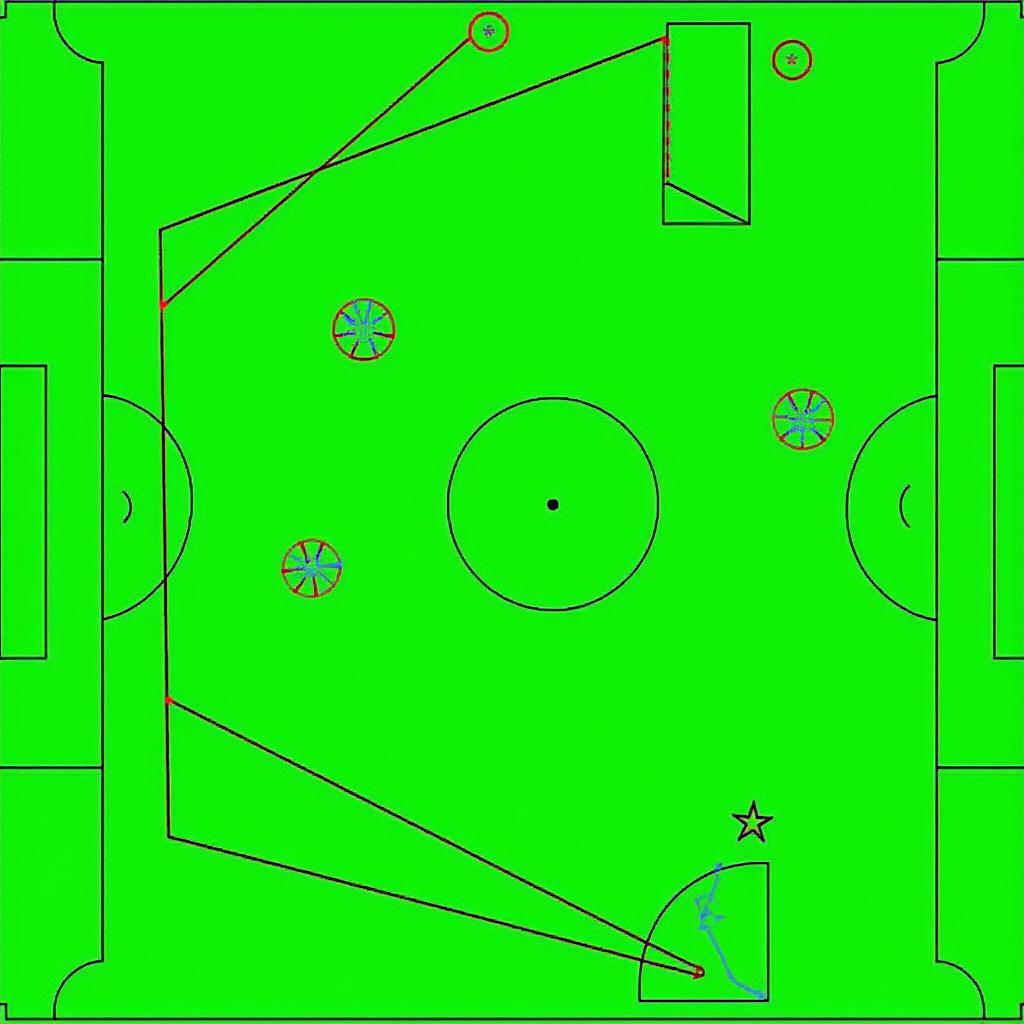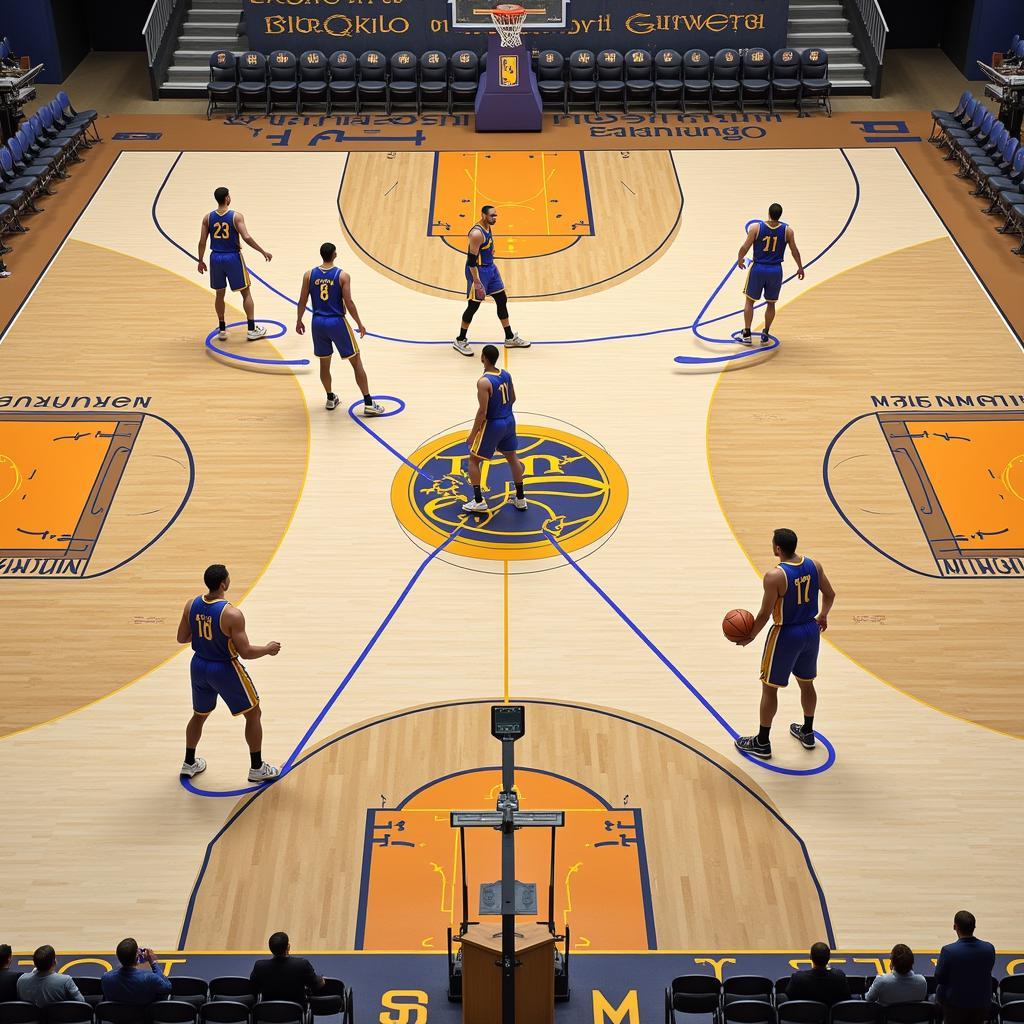Geometry Sports: Unveiling the Intricate Dance of Angles and Athletics
October 10, 2024Geometry Sports, at first glance, might seem like an unlikely pairing. After all, what do triangles and theorems have to do with the thrill of a goal or the grace of a perfectly executed move? Quite a lot, as it turns out. The world of sports, at its core, is a mesmerizing display of geometry in action, where angles determine trajectories, shapes influence strategies, and spatial awareness can mean the difference between victory and defeat.
 Soccer field with geometric shapes overlaid
Soccer field with geometric shapes overlaid
The Geometry of Motion: How Angles Dictate Success
From the precision of a basketball free throw to the curve of a soccer ball bending into the net, angles are the unsung heroes of countless sporting moments. Athletes who master the art of manipulating angles gain a significant advantage, as they can exploit these principles to outmaneuver opponents, maximize their reach, and optimize the trajectory of the ball.
Take, for instance, the art of passing in soccer. A well-placed pass requires an acute understanding of angles and timing. Players must assess the position of their teammates, the movement of their opponents, and the geometry of the playing field to calculate the perfect trajectory and velocity for a successful pass. Similarly, in basketball, the angle of a shot can determine its success rate. A steeper angle, while potentially more challenging, offers a higher chance of scoring by minimizing the target area for defenders.
Spatial Awareness: The Unspoken Language of Geometry in Sports
Beyond the measurable aspects of lines and angles, geometry in sports extends to a deeper, more intuitive level: spatial awareness. This inherent understanding of positioning, distances, and movement patterns is what allows athletes to anticipate plays, make split-second decisions, and navigate the field with remarkable accuracy.
 Basketball players moving on the court with geometric patterns highlighting their positions
Basketball players moving on the court with geometric patterns highlighting their positions
Think of a seasoned quarterback in American football. Their ability to read the defense, anticipate the routes of their receivers, and deliver a precise throw amidst a chaotic blitz is a testament to their exceptional spatial awareness. This instinctive grasp of geometry allows them to visualize the entire field as a dynamic, evolving puzzle, where every player’s movement influences the overall picture.
Mastering the Game: How Understanding Geometry Enhances Performance
Whether consciously or subconsciously, athletes who excel in their chosen sports possess an innate understanding of geometry. This knowledge isn’t limited to the elite few; it’s a fundamental aspect of athleticism that can be cultivated and honed through practice and analysis.
Coaches often incorporate geometric principles into their training regimens, using drills and exercises that emphasize spatial awareness, angle recognition, and strategic positioning. By understanding how these principles influence performance, athletes can refine their techniques, improve decision-making, and gain a competitive edge.
 A tennis player observing the court with geometric lines indicating court coverage and shot angles
A tennis player observing the court with geometric lines indicating court coverage and shot angles
The Ongoing Evolution: Geometry and the Future of Sports
As technology continues to revolutionize the world of sports, the role of geometry is becoming even more prominent. Advanced analytics, motion capture systems, and virtual reality training tools are providing athletes and coaches with unprecedented insights into the geometric intricacies of various sports.
These advancements allow for a deeper understanding of biomechanics, optimal movement patterns, and strategic decision-making based on real-time data analysis. By harnessing the power of geometry, the future of sports promises to be even more captivating, with athletes pushing the boundaries of human performance through a combination of skill, strategy, and a profound understanding of the language of shapes and angles.